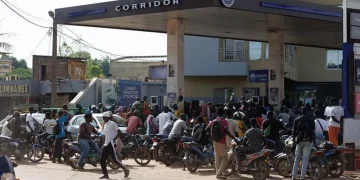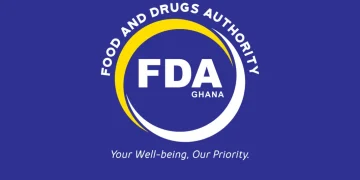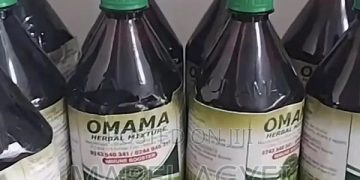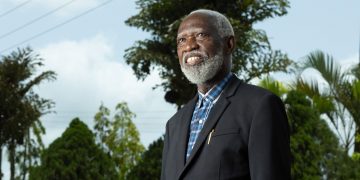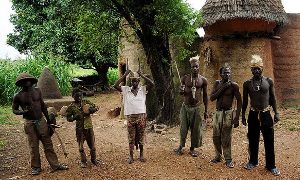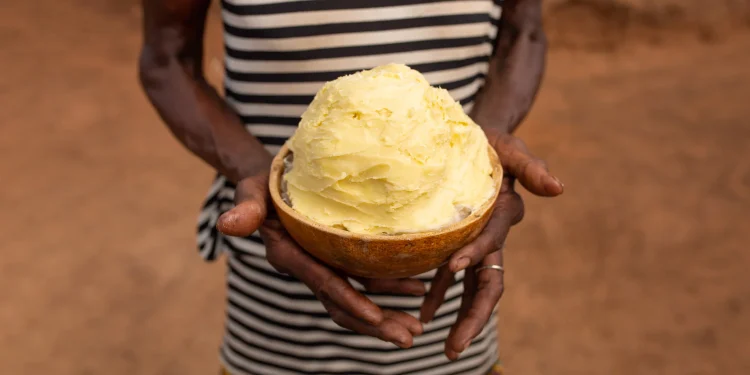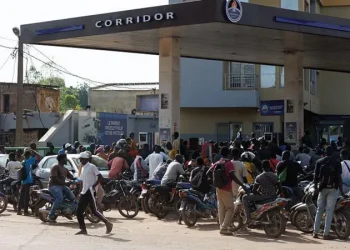Tamale is preparing to welcome the world in grand style this September as Ghana takes the spotlight with the eagerly anticipated World Shea Expo 2025.
This landmark event, set for September 2–4, 2025, at the Modern City Hotel, is shaping up to be the most significant gathering ever for the country’s burgeoning shea industry.
The Expo will bring together over 8,000 participants, including shea producers, global buyers, leading investors, development partners, and senior policymakers.
For three days, Tamale will serve as the epicenter of global conversations on trade, sustainability, innovation, and empowerment in the shea sector.
Organized by Savannah Golden Tree Ltd. in collaboration with the Presidential Initiatives in Agriculture and Agribusiness (PIAA), Ghana Export Promotion Authority (GEPA), Ghana EXIM Bank, Ghana Cocoa Board (COCOBOD), Ghana Cocoa Coffee and Sheanut Farmers Association (COCOSHE), Northern Regional Cordination Council, Northern Development Authority, and West African Center for Shea Innovation Research-UDS, the Expo is more than a trade fair.
It is a strategic platform for policy alignment, business networking, and industry transformation, aimed at repositioning Ghana as a competitive player in the $2 billion global shea market.
This year’s theme, “Empowering Women and Youth-Led SMEs: The Role of Government and Financial Institutions,” reflects the urgent need to ensure that those who make up the backbone of the shea value chain—particularly women and young entrepreneurs—move beyond survival to secure a meaningful stake in the industry’s prosperity.
The event will be officially opened by His Excellency, President John Mahama, who has consistently underscored the strategic importance of the shea sector to the country.
His anticipated presence sends a clear signal that shea is no longer a peripheral crop, but a central pillar in Ghana’s quest for inclusive economic transformation. The event will be officially opened by His Excellency, President John Mahama.
“The Government of Ghana remains fully committed to the growth and transformation of the shea industry,” said Dr Peter Boamah Otokunor, Director of the Presidential Initiatives in Agriculture & Agribusiness (PIAA), Office of the President.
“Through strategic investments, policy support, and the empowerment of local actors—particularly women—we are positioning shea as a key pillar of our agricultural and industrial agenda.
“The shea sector has immense potential, and the government’s vision is to fully harness this by integrating it into the broader framework of national development. World Shea Expo 2025 serves as a critical platform to bring together global stakeholders, drive the sector forward, and align it with our nation’s economic goals.”
“Additionally, the government’s flagship policy, the 24-hour economy, presents a unique opportunity for the shea industry to leverage its full potential for accelerated and sustainable growth.
“By creating a round-the-clock environment for production, processing, and trade, we aim to maximize the value derived from shea and ensure that the benefits are felt in communities across the country, particularly among women and youth who are the backbone of this sector.
“With the World Shea Expo 2025, we are not only promoting the shea industry but also advancing a national agenda for inclusive and sustained economic prosperity.” He concluded.
A gobal commodity with untapped potential
For Ghana, shea is far more than just another agricultural export. It is often called “women’s gold”—a vital lifeline for over one million women across the Northern, Upper East, and Upper West regions.
These women, organized in cooperatives or working independently, spend countless hours collecting, drying, and processing shea nuts, transforming them into butter that feeds households and sustains communities.
They represent about 90 percent of the workforce in the shea value chain, yet they remain at the very bottom of the earnings ladder, capturing only a fraction of the immense wealth the industry generates globally.
The figures tell a sobering story. Ghana currently exports more than 70,000 tons of shea annually, generating approximately $112.6 million in foreign exchange earnings.
But here lies the problem: the majority of these exports leave the country in raw, unprocessed form, allowing multinational corporations and foreign processors to capture the real value through refining, branding, and distribution. In essence, Ghana provides the raw material while others reap the lion’s share of profits.
Meanwhile, the global shea industry is booming. Valued at over $2 billion, it is powered by surging demand in cosmetics, pharmaceuticals, and food processing, particularly in Europe, North America, and Asia.
Shea butter has become an essential ingredient in everything from luxury skincare products to premium chocolate, making it one of the most versatile and sought-after natural resources on the market.
For policymakers, this untapped potential presents an extraordinary opportunity. By modernizing processing facilities, strengthening cooperatives, and fostering domestic and international partnerships, the shea sector could become a powerful engine for job creation, particularly for women and youth.
It also offers a pathway to diversify Ghana’s export base, reducing dependence on traditional cash crops like cocoa while empowering rural households that have long been on the margins of economic growth.
A bold vision for shea transformation
The Government of Ghana has left no doubt about its ambitions for the shea industry. What was once considered a supporting crop is now being repositioned as a pillar of national economic transformation.
Through the Presidential Initiatives in Agriculture and Agribusiness (PIAA), shea has been designated as a priority sector, with targeted investments and policy support designed to unlock its full potential.
At the heart of this transformation agenda lies the revitalization of the Buipe Shea Factory, a facility that has long symbolized both the promise and the challenges of Ghana’s shea industry.
Once revamped, this factory is expected to become one of the largest and most advanced shea processing hubs in West Africa, capable of refining nuts into butter and producing high-quality derivatives for export to the global cosmetics, food, and pharmaceutical industries.
The government’s vision is clear: move beyond exporting raw shea and instead compete in the global market with finished, branded, and value-added products.
By doing so, Ghana can capture a much larger share of the multi-billion-dollar shea market, keep more wealth within its borders, and deliver meaningful economic benefits to those at the grassroots.
President John Mahama, who will deliver the keynote address at the World Shea Expo, has tied this vision directly to his administration’s broader 24-hour economy agenda. This ambitious policy aims to maximize productivity across sectors, stimulate rural industrialization, and create decent, sustainable jobs.
This bold approach signals a new era for Ghana’s shea sector—one where the industry is no longer defined by subsistence harvesting but by innovation, value addition, and global competitiveness.
Why Tamale ?
Choosing Tamale as the host city for the World Shea Expo 2025 is more than a logistical decision—it is a symbolic statement of intent. Tamale, the bustling capital of the Northern Region, is the beating heart of Ghana’s shea industry.
Its surrounding savannah lands are dotted with millions of wild shea trees, tended by rural communities who have relied on them for generations. These communities, especially women’s cooperatives, form the very foundation of an industry that supports over one million livelihoods nationwide.
Hosting the world in Tamale brings the conversation back to where it truly begins: the farms, processing centers, and cooperatives where shea is nurtured from seed to finished product.
It allows global buyers, investors, and policymakers to experience firsthand the hard work, dedication, and cultural significance that make shea much more than an export commodity.
The choice of Tamale also aligns with the government’s broader commitment to decentralization and rural economic development.
By bringing a high-profile, globally significant event to the north, the Expo signals that economic growth must be inclusive, reaching beyond Accra and the urban south.
It also paves the way for new investments in infrastructure, trade, and community development, ensuring that the benefits of the shea boom are felt where they are needed most.
What awaits at the Expo
The World Shea Expo 2025 promises a comprehensive and action-driven program aimed at driving investment, shaping policy, and accelerating industry growth.
Day 1 (September 2): The Expo will open with a keynote address by President John Mahama, reaffirming his administration’s commitment to transforming the shea sector.
A Shea Trade Fair will showcase products from Ghanaian cooperatives and processors, connecting them with international buyers and investors.
A Women in Shea Panel will highlight inspiring success stories from women-led cooperatives, offering a platform for grassroots voices to be heard on the global stage.
Day 2 (September 3): The day will focus on funding and innovation. An Investors Forum will bring together financiers and agribusiness entrepreneurs to explore capital opportunities for expanding processing and exports.
A Youth Entrepreneurship Workshop will train emerging business leaders on shea processing, product diversification, and market access.
Additionally, a Sustainability Showcase will present innovations in climate-smart shea production and agroforestry, ensuring that industry growth aligns with environmental stewardship.
Day 3 (September 4): The final day will feature a high-level Policy Dialogue, where government leaders, development partners, and the private sector will collaborate on strategies for long-term sectoral growth.
The Expo will conclude with an Awards Ceremony honoring outstanding shea producers and exporters, followed by field visits to processing centers in Northern Ghana, allowing participants to engage directly with the realities of the value chain.
Organizers expect the event to generate over 150 business-to-business partnerships, provide capacity-building for more than 200 small and medium-sized enterprises (SMEs), and produce actionable policy recommendations to guide the future of Ghana’s shea industry.
Conclusion
As the countdown to the World Shea Expo 2025 in Tamale continues, anticipation builds for what promises to be a defining moment for Ghana’s shea industry.
The event will bring together key global stakeholders, including producers, investors, and policymakers, to explore the vast potential of Ghana’s shea sector.
The Expo represents a critical opportunity for the country to not only showcase its shea products but to accelerate the transformation of an industry that has long been underexploited.
With strategic investments, policy support, and a clear focus on empowering women and youth, the government is positioning shea as a central component of its economic growth agenda.
In line with President Mahama’s 24-hour economy policy, the Expo also highlights the country’s commitment to creating a round-the-clock environment for production and trade, enabling the shea industry to maximize its potential.
As September 2 approaches, the spotlight will be on Ghana’s efforts to shift the shea sector from a raw material exporter to a global leader in high-value, sustainable shea products.
The World Shea Expo 2025 marks a significant step in this journey, offering a platform for collaboration, innovation, and growth that will shape the future of the industry for years to come. Participants can register via the event website at: www.worldsheaexpo.com
source: Asaase Radio

